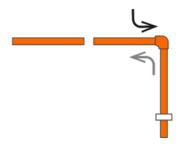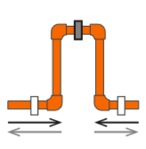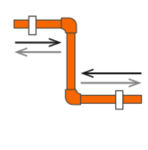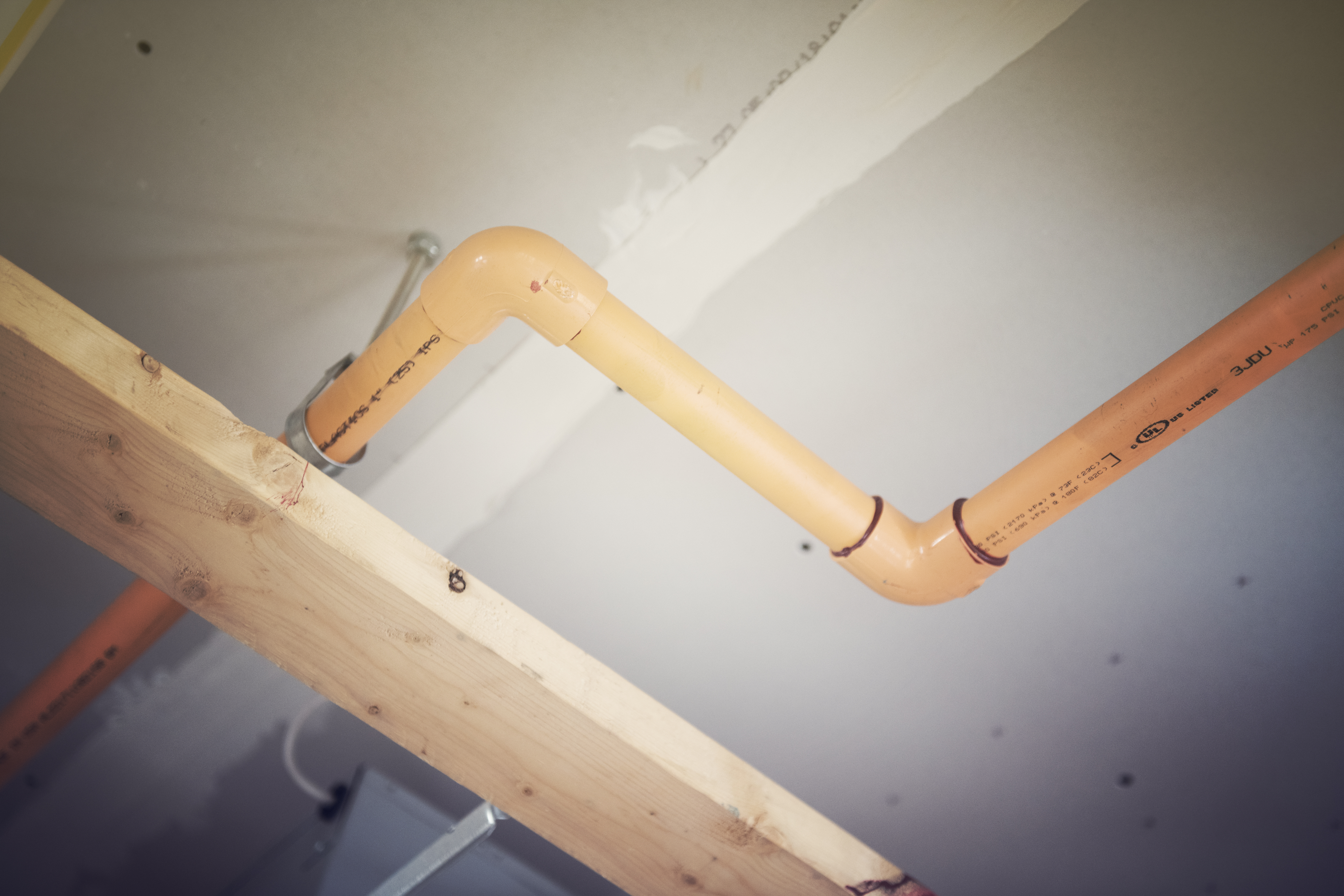What You Need to Know About BlazeMaster® CPVC Thermal Expansion and Contraction
All piping materials expand and contract as a result of temperature change. As the temperature increases, pipes expand. When the temperature decreases, pipes contract. If left unaccounted for while designing a fire protection system, thermal expansion can cause the system to fail prematurely, resulting in unnecessary repairs and reliability concerns.
For example, if a pipe in a fire protection system is constrained at both ends, stress will begin to build as the pipe expands. If the stress becomes too great, then the pipe will break and the system may not deliver water needed to extinguish a fire.
Fortunately, the damaging effects of thermal expansion and contraction can be easily prevented by understanding how temperature change impacts piping and how to deflect stress on a piping system.
How to Determine Thermal Expansion or Contraction
To determine how much a pipe will expand or contract, consider these three variables:
- Coefficient of thermal expansion (in./in.°F): Every material has a coefficient of linear thermal expansion. It shows how every degree of temperature change results in a certain amount of linear expansion.
- Length of pipe run (in.): The longer the pipe, the more it will expand or contract.
- Temperature change: This is the difference between the maximum and minimum temperature the pipe will be exposed to (°F), from the time of installation through its service life. To determine your pipe’s temperature change, consider the temperature of the internal fluid as well as the external temperature the pipe is exposed to.
Plug the variables above into the following equation to determine the expansion or contraction of a pipe.
Equation: ∆L = Lp C ∆T
- ∆L = Change in length due to change in temperature (in.)
- Lp = Length of pipe run (in.)
- C= Coefficient of Thermal Expansion (in./in.°F)
- ∆T = Change in temperature (°F)
Factors of the Material for Handling Stress
The length a pipe will expand and contract is not the only important aspect for designing against expansion and contraction damage. You must also understand a few more qualities of the system and material.
- Working stress: The maximum amount of stress a material can handle when in use
- Modulus of elasticity: A measure of pipe stiffness
- Outer pipe diameter: The diameter of the outside of the pipe, which affects the ability of the pipe to deflect stress
Thermoplastics expand and contract more than metals. But, the aforementioned qualities are what allow thermoplastics to deflect stress better than metals.
For a more in-depth look at CPVC installation and the distinct advantages BlazeMaster® CPVC has over steel, download the 
How to Design a System for Expansion and Contraction
For most fire protection system operating and installation conditions, expansion and contraction can be accommodated for by changing the direction of the pipe run. However, in certain instances, expansion loops or offsets may be required when installing long, straight runs of pipe.
Change of Direction
At the end of the run of pipe, the corner elbow and adjoining pipe can allow for some degree of movement. If the adjoining pipe is long enough, thermal expansion and contraction can be accounted for by placing a hanger or guide a defined distance away from the elbow.
Expansion Loop
Expansion loops are placed in the middle of a run of pipe. The pipe is configured into a “U” shape, and its center is restrained with a bracket. Each side of the pipe run coming into the U is hung with a hanger or guide, allowing the pipe to move back and forth. For expansion, the opening of the U narrows. With contraction, the U opening widens.
Expansion Offset
This deflection mechanism is used when the pipe needs to avoid fixed structures.
Expansion offsets are placed in the center of a pipe run. Each elbow, as well as the vertical length of pipe, allow for some degree of deflection. Hangers or guides are used to set each pipe run. As the pipe expands, the top and bottom elbows will push in, causing the vertical length to angle to the right. With contraction, the vertical pipe will angle to the left.
Calculating Loop Length
Designing the above deflection mechanisms depends on the pipe length, working stress, modulus of elasticity and outer pipe diameter. To calculate loop length, use the variables in the equation.
Equation: L = (3 ED (ΔL))/2S
- L= Loop length (in. or cm)
- E = Modulus of elasticity at maximum temperature (psi or kPa)
- D = Outside diameter of the pipe (in. or cm)
- ΔL = Change in length due to change in temperature (in. or cm)
- S = Working stress at maximum temperature (psi or kPa)
Best Practices For Designing Against Thermal Expansion and Contraction
Once the loop length has been determined, ensure these best practices are followed for design and installation:
- Always leave adequate spacing (the loop length) between elbows and hangers/restraints.
- Expansion loops should be constructed with straight pipe and 90° elbows, which are solvent cemented together.
- Avoid restricting natural movement of the pipe in the direction of the expansion and contraction.
- Always refer to local codes and the manufacturer’s instructions when designing for thermal expansion.
Discover the Benefits of a BlazeMaster® CPVC Fire Protection System
Learn about how CPVC can save you time and money, where to use it and all the benefits of CPVC in our Introduction to BlazeMaster® Fire Protection Systems Video or download the Thermal Expansion Calculator:


